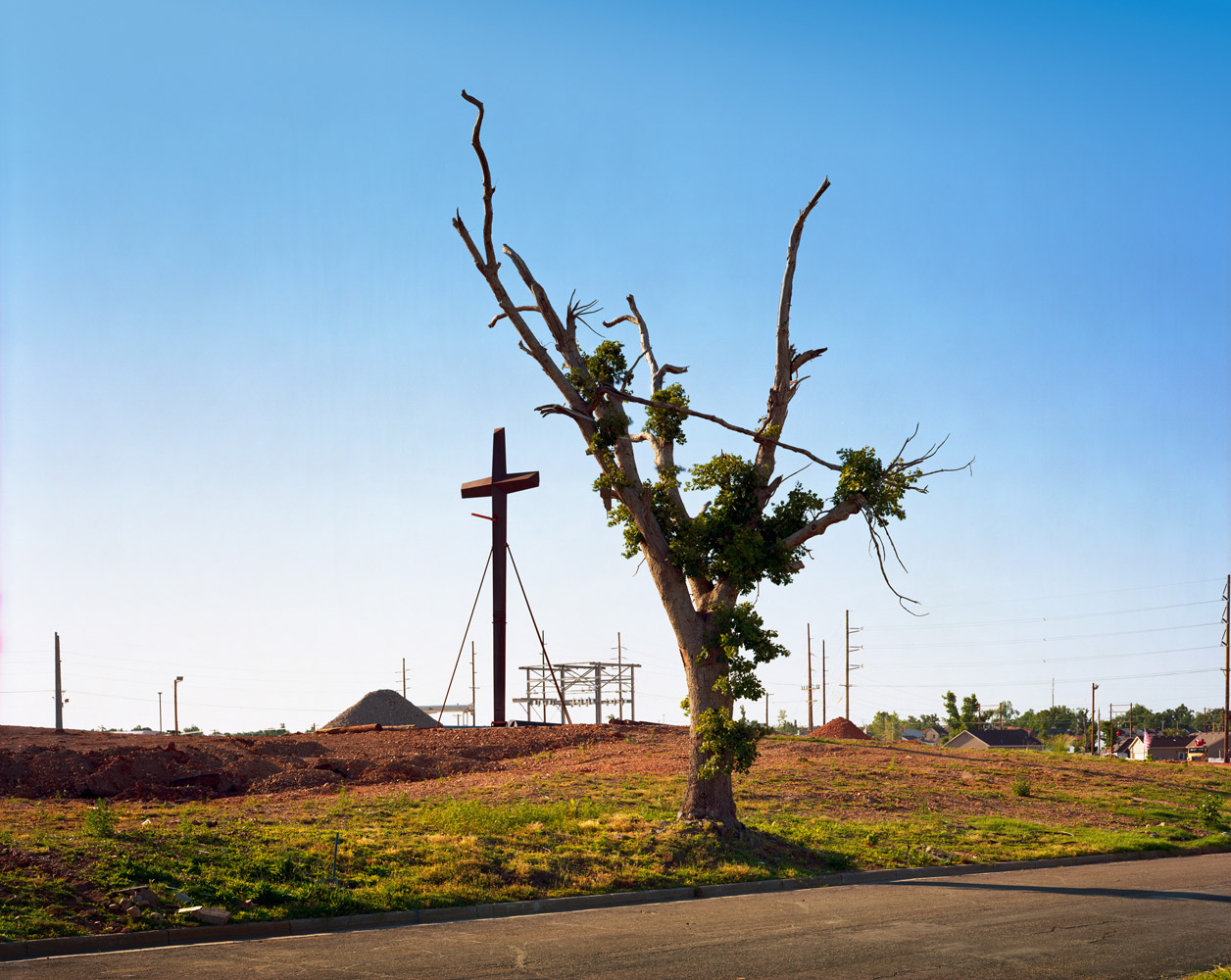
The satellite images of Joplin, Mo., that are available on Google Maps were taken within the last year, after the devastating tornado of May 22, 2011, that killed more than 160 people. Buildings across the city appear as matchsticks in those aerial views, which have been preserved by the Internet as the picture of Joplin.
But when photographer Greg Miller arrived in Joplin to photograph the city in the days leading up to the tornado’s one-year anniversary, it looked like everything had been fixed. “I had to ask somebody where the damage was,” he says. Miller, who says that Joplin is much larger than he expected and eventually drove out to the areas that are still putting themselves back together. “I realized that not by a long shot has everything been rebuilt.”
For one thing: there are no trees. That was, Miller says, the most dramatic evidence of the destruction. “They had tons of trees in that area and now the trees are either gone or stripped of their leaves,” he says.
It was in a cemetery that the extent of the damage really hit home for the photographer. He figured there were other priorities in the town and no way the people would take the time to right any monuments that had been knocked over—but, even as he thought that, he stumbled upon some men in the process of fixing the place up. “The guys were trying to figure out where the tombstones went. A 500-lb. tombstone, this piece of solid granite, had been tossed maybe 20 feet away,” he says. “Cars, much bigger than 500 lbs., were moved around too; maybe I’m a little numb to the pictures of cars. Seeing that stone…I thought, wow, that must been really a strong wind.”
It wasn’t just a reminder of the strength of the tornado itself. It was also a reminder of the strength of the people. After all, he didn’t actually see cars still piled up in the streets of Joplin. And some people, like a woman thankful for her Habitat for Humanity house who Miller met when photographing her two children waiting at the bus stop, managed to see a silver lining.
And that attitude fit with Miller’s photographic goals. There were still piles of debris, he says, and still empty foundations. There were sad moments to photograph, evidence of loss. But, for one thing, Miller felt like there were so many pictures of that destruction that there was no point making another. And for another, that felt like the old Joplin, the satellite-picture Joplin, not the Joplin of today.
“Definitely there was an upbeat mood in the town. Because of the anniversary, they don’t go to that dark place. They’re staying in this place of like, look, we’re going to make this happen,” he says. “One person I spoke to said it wiped Joplin off the map and then put it on the map.”
Greg Miller is a photographer based in New York City. See more of his work here.

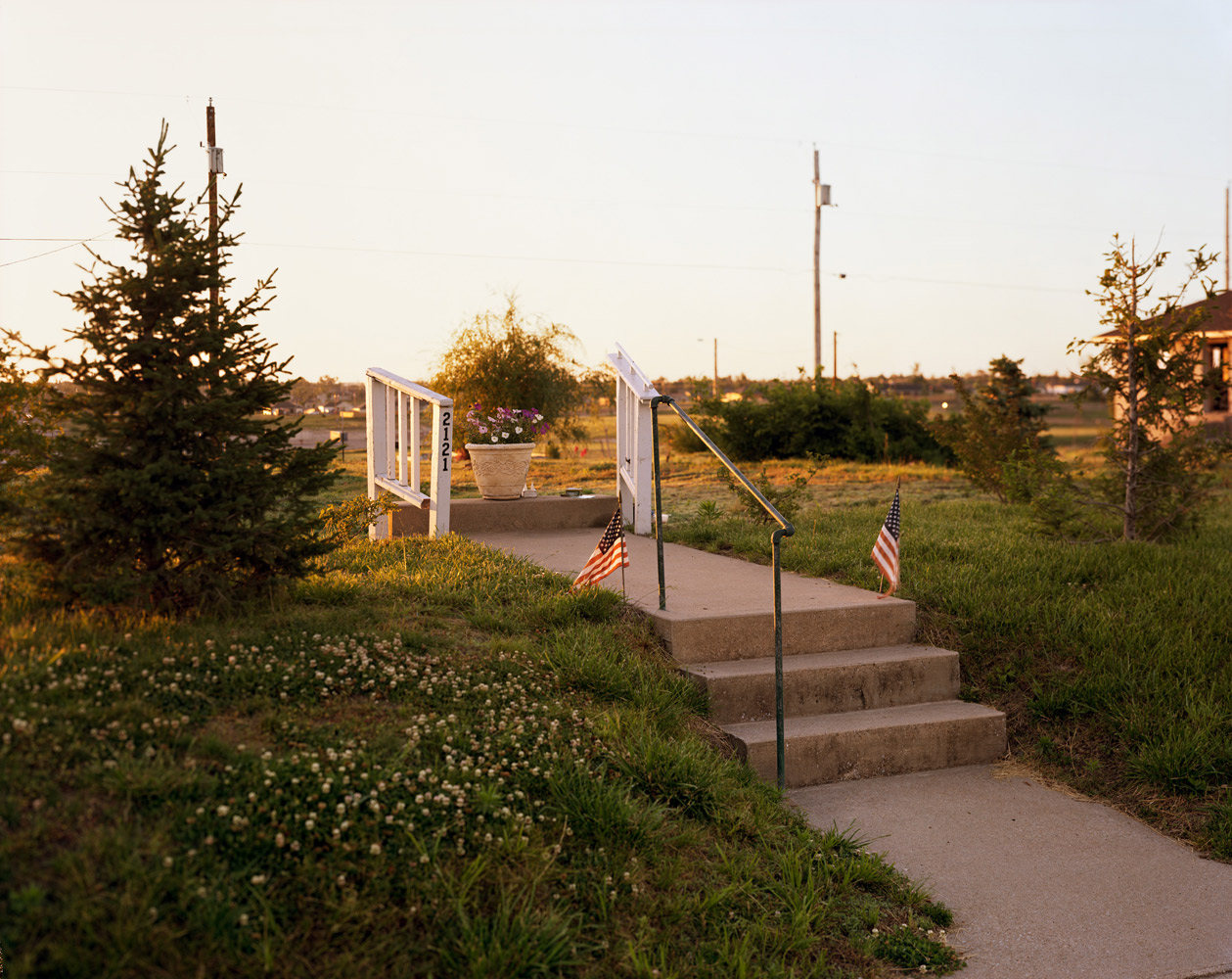
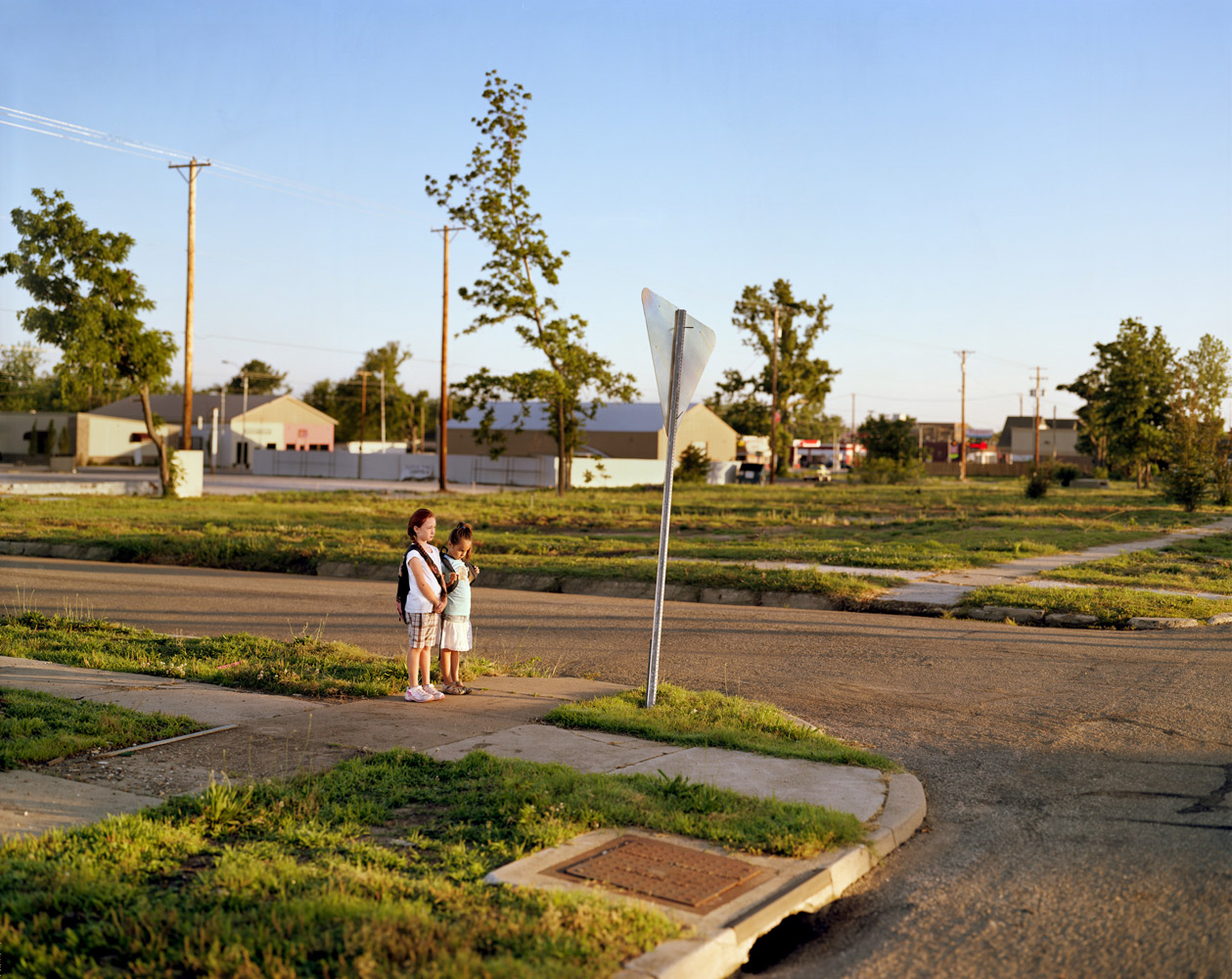

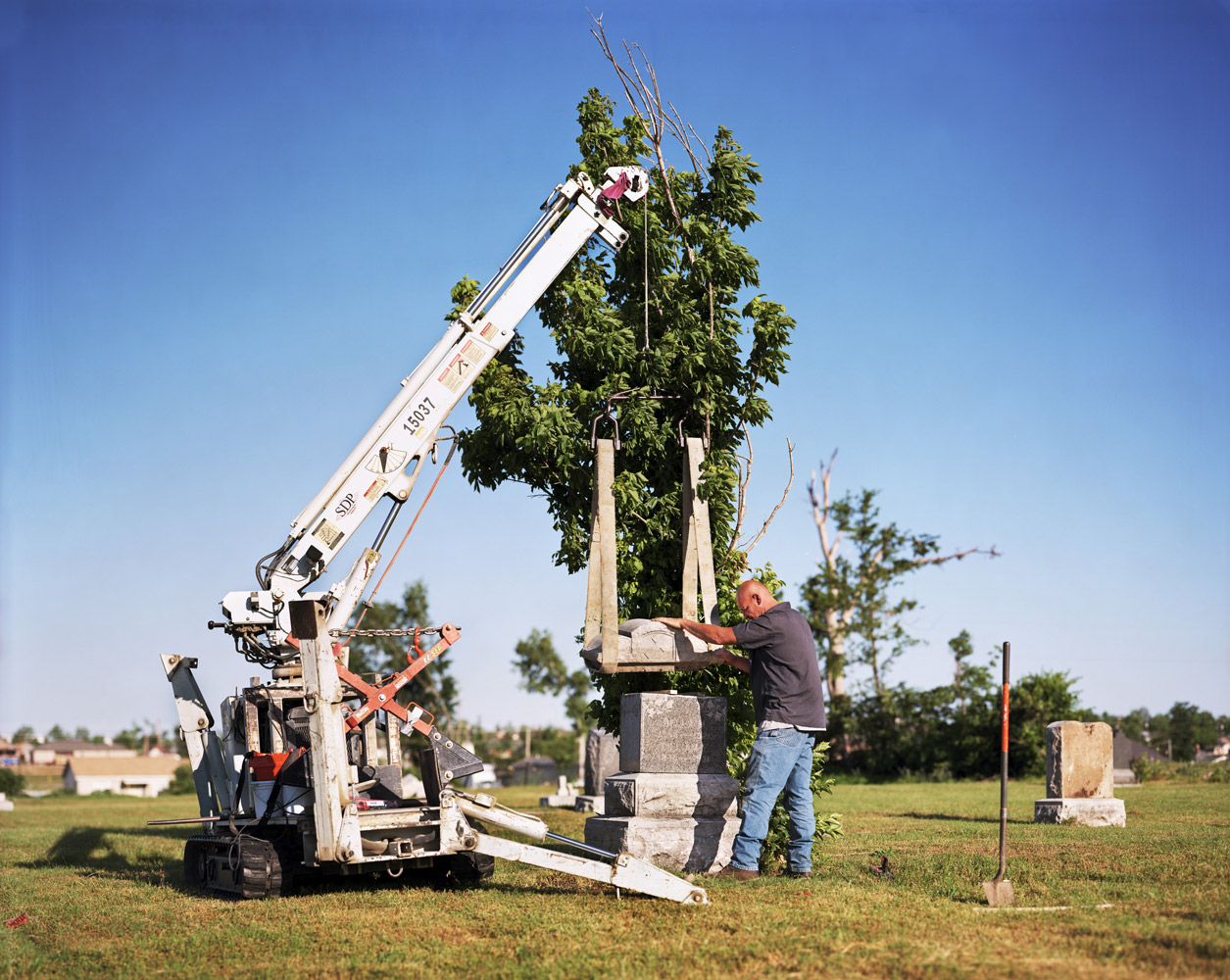
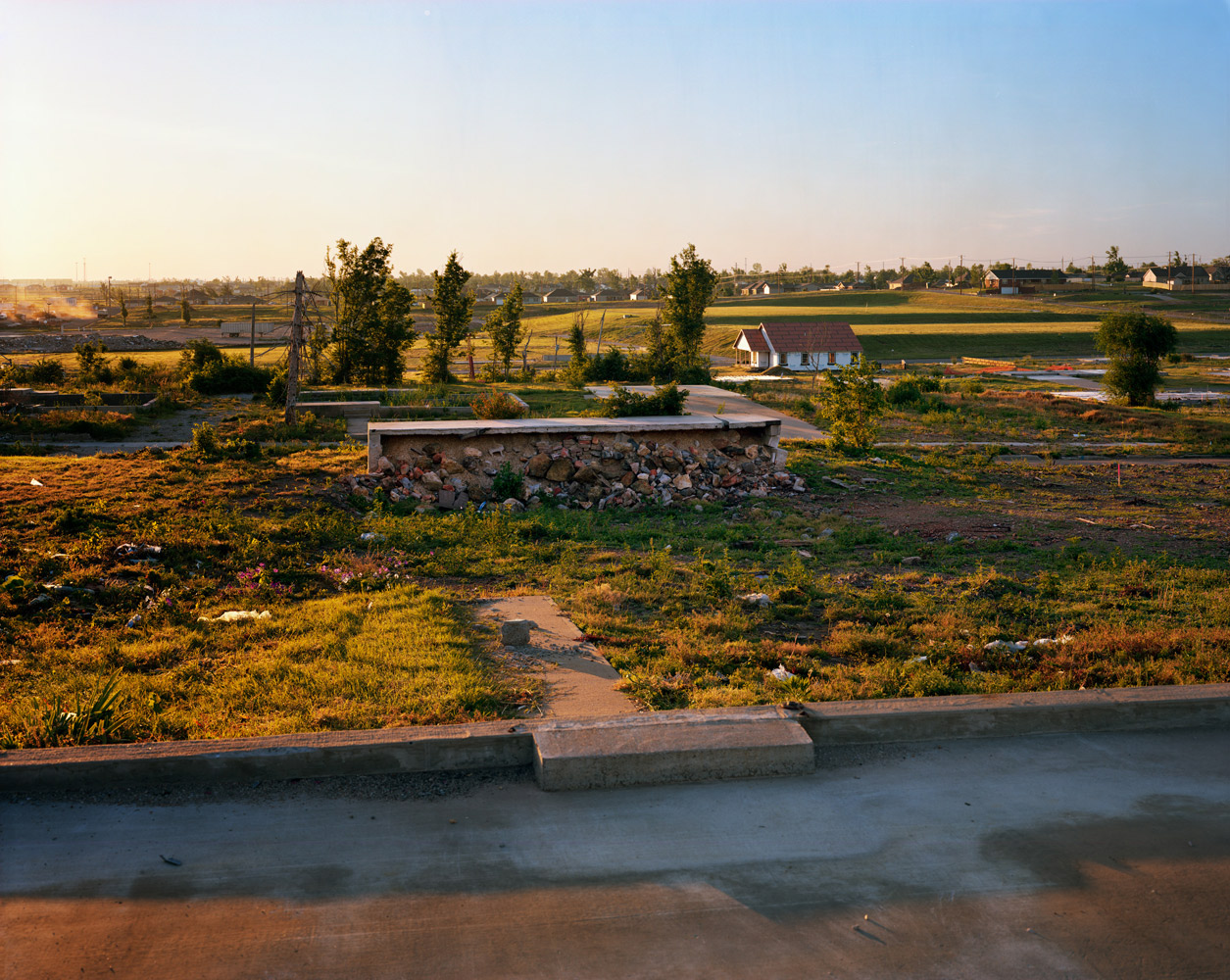
More Must-Reads from TIME
- Cybersecurity Experts Are Sounding the Alarm on DOGE
- Meet the 2025 Women of the Year
- The Harsh Truth About Disability Inclusion
- Why Do More Young Adults Have Cancer?
- Colman Domingo Leads With Radical Love
- How to Get Better at Doing Things Alone
- Michelle Zauner Stares Down the Darkness
Write to Lily Rothman at lily.rothman@time.com